Husky: characteristics, varieties and cultivation

They fall in love with huskies at first sight. It is enough to look into their enchanting eyes of an unusual and bright color. These pets have a playful disposition. They are energetic, mobile and love to run a lot. Many people dream of having such an interesting pet. However, before buying this unusual puppy, you need to thoroughly understand what husky dogs are, what are their main characteristics and behavior. Only after learning all the nuances of keeping such animals, you can make the right decision about their acquisition.
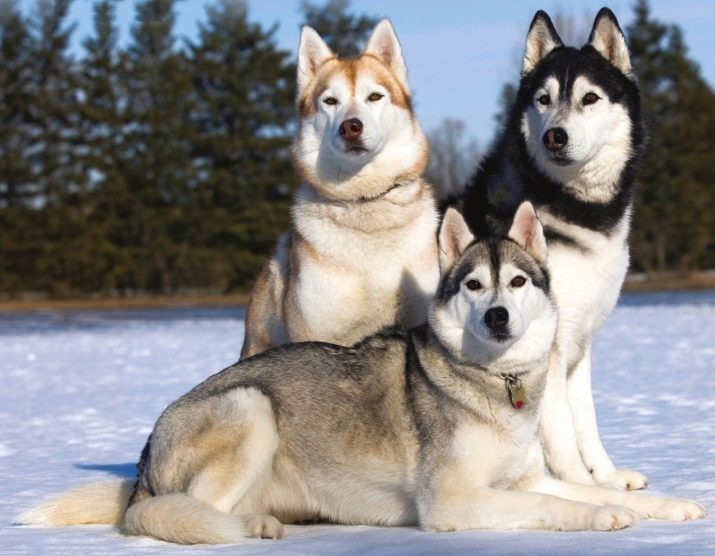
Origin story
Before proceeding to a detailed examination of all the features and characteristics of husky dogs, you should familiarize yourself with the history of their origin.
The history of this eerily popular and famous breed is confusing and controversial. It is known for certain that Huskies are the result of crossing wolves and northern dogs. Dogs with this combination of genes were characterized by excellent qualities of endurance. In addition, they were not afraid of severe frosts in winter - in such an environment, these dogs felt more than comfortable. Devotion and a very beautiful coat were the hallmarks of the husky.

These wolf dogs have shown themselves to be very good helpers for the inhabitants of the Far North. They were useful on the hunt. Huskies were also useful in reindeer husbandry and property protection. If we talk about the main duty of these beautiful and intelligent dogs, then it is the transportation of a person and his goods across the northern expanses. For many years, energetic huskies have enjoyed fulfilling these important functions for humans.

Representatives of the northern nomadic tribes - the Chukchi, are recognized as the "parents" of this unique breed. It was this people who "had a hand" in the appearance of the husky, since it was the wolf-dog that he used to expand the hunting grounds.
To cope with such functions, the Chukchi needed dogs that could easily cover impressive distances for not too long time. At the same time, the "working dogs" had to drag behind them a valuable load, packed in a large sleigh. It was the pets bred for these purposes that became the progenitors of the well-known Siberian husky.
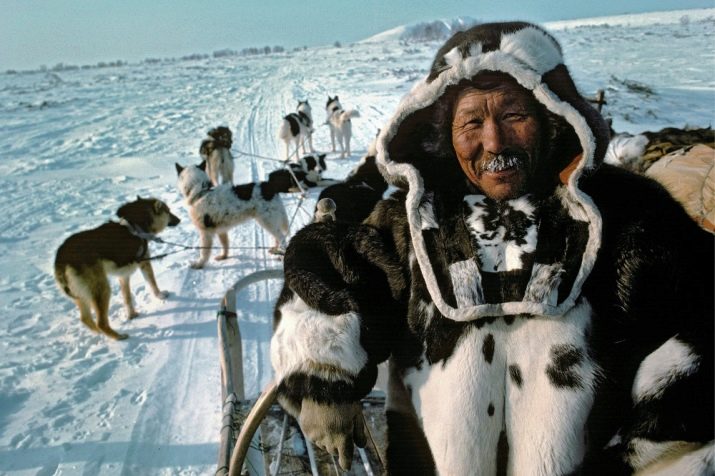
The Eskimos were also very fond of dogs of this amazing breed. Huskies were famous for their versatility and unpretentiousness in terms of care and maintenance. Eskimo dogs were distinguished by their endurance and for a long time they could eat only dried fish. Since the Eskimos did not suffer from a shortage of fish, the maintenance of the dogs of the described breed did not cause serious difficulties and troubles.

Dogs of the famous husky breed got their name from the abbreviated word "eski". This is what the Canadians called the Eskimos. Subsequently, the name "husky" began to be applied to all sled dogs living and working in the northern region.
On the territory of the USSR, representatives of this bright breed did not receive wide distribution. At that time, the huskies seemed to people too small to carry large and heavy loads. The Americans, on the other hand, aroused great interest in huskies. Only after the collapse of the USSR did these dogs come to Russia again, but from the USA.
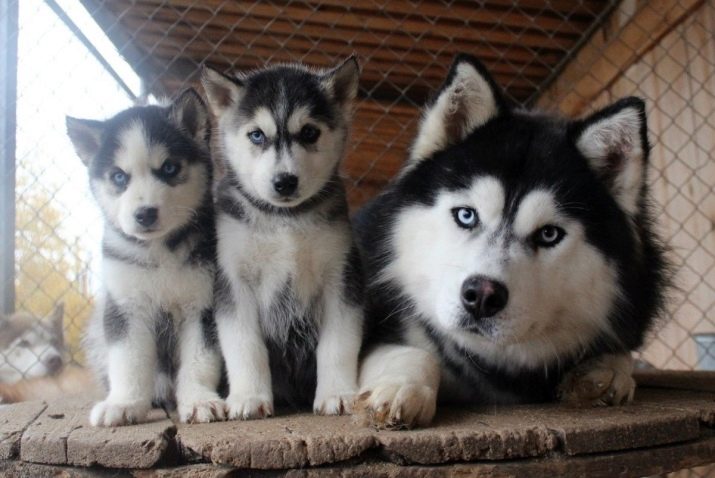
Description of the breed
The history of the husky is rich and interesting. These animals are representatives of one of the oldest sled dog breeds. They were bred exclusively for work. Fluffy dogs with strong muscles were supposed to pull harness with luggage and a person without problems in the atmosphere of the harsh cold North. Over time, the standards for these pets have undergone a lot of changes - these dogs have ceased to be perceived and raised as "workhorses". Recently, emphasis has been placed on the beauty and home keeping of these original animals.
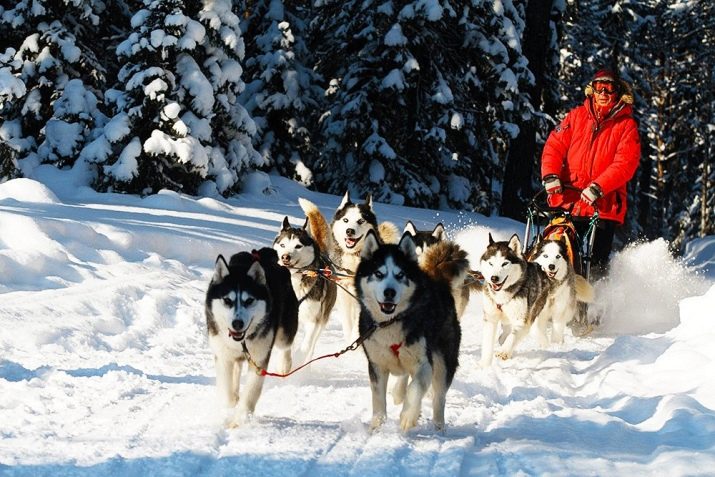
Let's take a closer look at the description of the representatives of this breed.
- An adult bitch in weight can reach 15-23 kg. Males grow more "heavy" - their weight varies from 53 to 60 kg.
- The growth of representatives of the husky breed is considered average. At the withers, bitches can reach 50-56 cm, and males - 53-60 cm (they are always larger).
- As for the color - it can be very different. The most common and frequently encountered dogs are black and white or gray and white. The second most common and popular is considered to be a very beautiful chocolate color with white areas. Representatives of this color breed attract a lot of attention, because they look unusual.
- The eyes of these dogs have a characteristic almond shape. They are slightly slanted. Removed medium. Husky's iris color is one of the most striking traits of these dogs. Individuals with blue or brown eyes look unusual and attractive.There are also such dogs, whose eyes have a multi-colored iris. For example, one eye might be blue and the other brown.
- Husky has traditional triangular ears. They are high on the head and close to each other. As a rule, the ears have impressive fur and are dense. The tips of the ears are rounded and "look" exclusively upward. They stand on the head absolutely even and clearly - there should not be any inclinations.
- The Husky has a medium-length neck. When the dog is standing, it is slightly arched and boldly raised. During movement, the neck is extended in such a way that the head protrudes slightly forward.
- The chest of purebred huskies is distinguished by strength. It is well down to the elbows. The ribs of these dogs are naturally sagittal, flat at the sides and wide.
- Husky's legs are strong and well-pubescent. As a rule, they have a neat oval structure. The paw pads are very firm and firm. Paws of purebred representatives will always be even.
- The tail of these dogs is distinguished by thick and solid pubescence. When alert, the Husky's tail will be slightly raised and curled like a sickle. In a calm state, this part will be omitted.
- With proper care, huskies live on average up to 15 years. Of course, this indicator may vary depending on the conditions of keeping the animal.
- The peculiarities of the character of these animals must be taken into account if you are going to live with them in the same territory. In many ways, huskies are similar to cats - they are very stubborn and love freedom. Usually they choose one person as their owner and become very attached to him. These dogs are friendly towards adults and children, so they are not often walked with a muzzle. They are active, they are very fond of sports entertainment. Accustomed to leading the most mobile lifestyle. If you want to keep an absolutely calm and lazy dog at home, who loves to sleep and lie down longer, then the husky will not suit you.
- The intelligence of these animals is at a high level. They are smart, cunning and quick-witted. True, huskies are very difficult to train. This is due to the fact that these animals are overly independent in nature. And it can be very difficult for them to concentrate on one thing because of increased activity and energy.
- In the role of an ordinary guard, a husky is unlikely to fit. As a watchman and guard, the current representatives of this northern breed are also not used. Husky is an exceptionally good friend, a companion dog that does not show aggression towards other people.
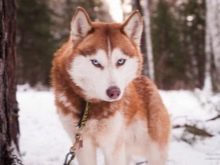
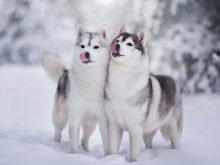
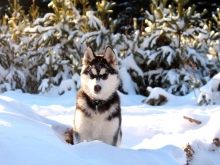
Huskies completely black, white or brown are extremely rare. However, this does not mean that such individuals are considered "defective". In addition, the presence of a kind of contrast mask in front of the eyes is permissible. A neat vertical stripe can stretch from the forehead to the nose.
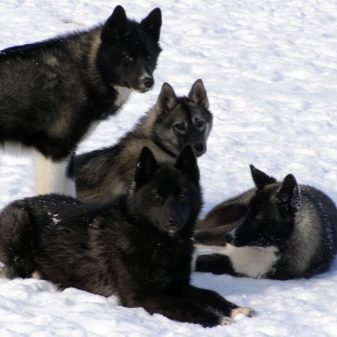
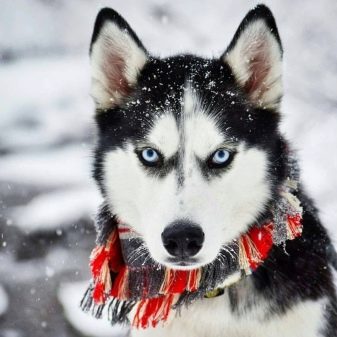
It should be borne in mind that any deviations from the standards listed above will be considered significant deficiencies or flaws that may serve as a reason for disqualification.
A separate item should be highlighted the description of the coat color of these dogs. According to the standards, such wool colors are allowed.
- Black. Otherwise, this color of the husky is also called "afro". But genetically these dogs do not have such a color. Usually there are snow-white blotches.
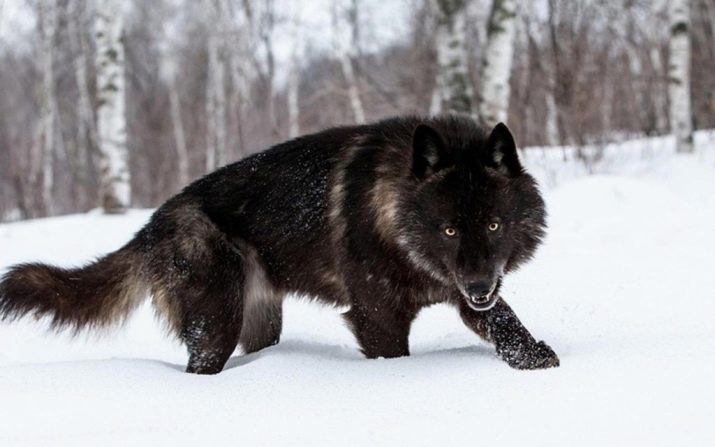
- White. This color of the dog usually does not have any dots, specks and other inclusions. This is the only color option for which brown and dark shades of the nose, lips and eyelids are acceptable.
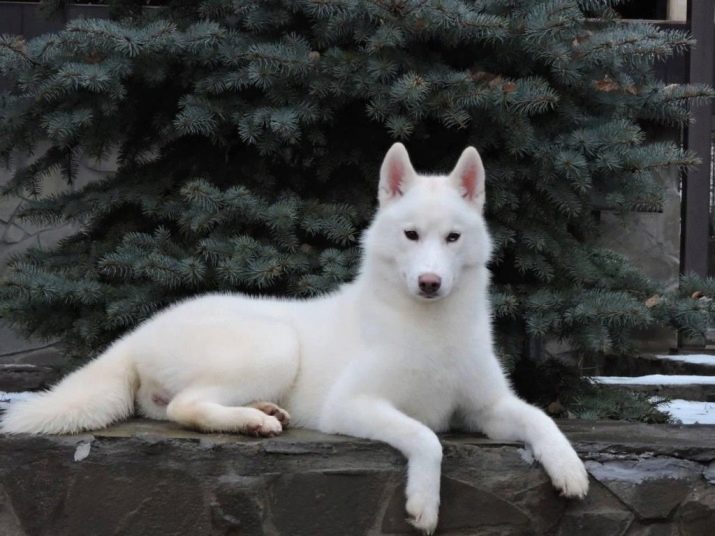
- Black and white. This color is recognized as one of the most relevant and common. However, due to the color of the undercoat of a dog of this color, from the side it may appear just gray. At the same time, a discreet redhead can be seen on the paws.
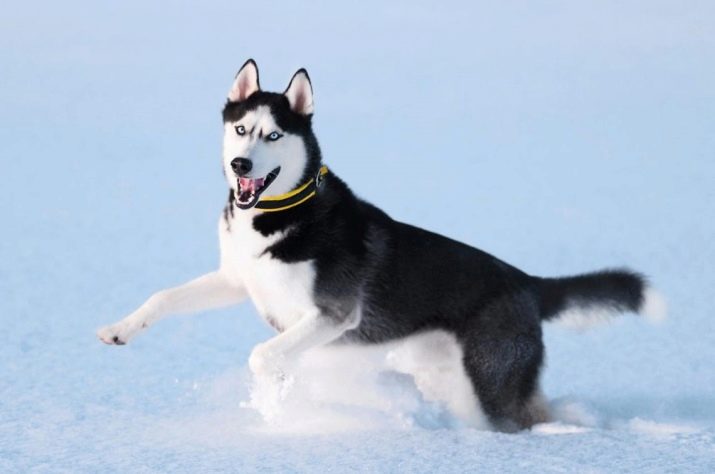
- White-brown. This interesting and eye-catching coloration can range from dark brown to reddish.Under the sun's rays, the coat of this color always fades in a short time and becomes lighter.
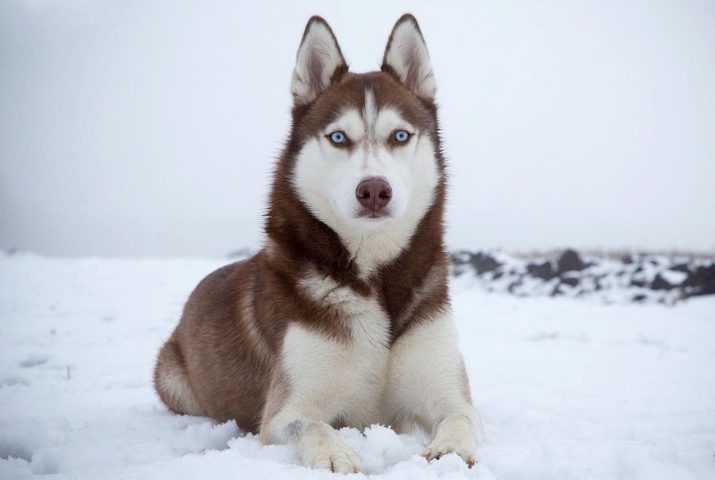
- Sable. In this case, we mean a reddish or coppery fur. However, it has many differences from the usual brown-white color. The pigmentation of the nose, lips and eyelids will be black.
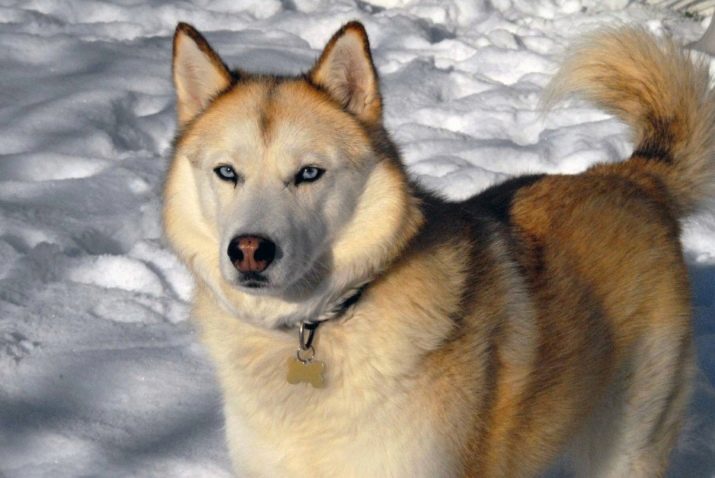
- Black-backed. This is another interesting husky color, in which a contrasting dark speck will be present on the back against the background of snow-white fur.
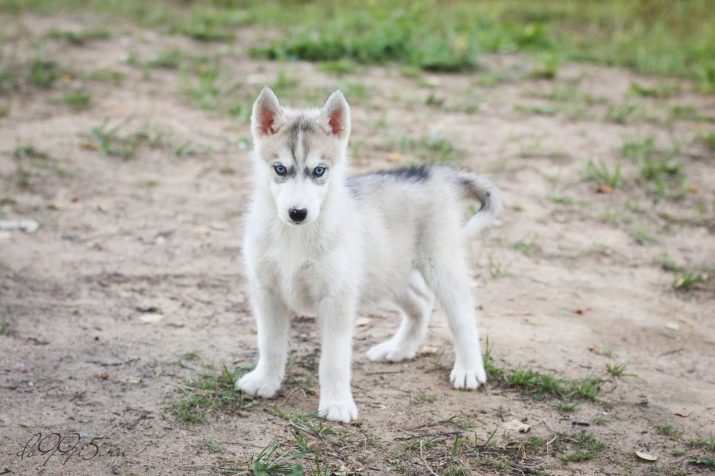
- Zone gray... This color was found to be close to the original version typical of purebred dogs. In this case, the tip of the tail will be black, and the main color will be black-red-white.

Character and behavior
Despite the fact that huskies usually behave very friendly and strive for communication themselves, they remain very capricious and always act in their own interests. These dogs behave incredibly stubbornly. Husky just needs a strong, persistent and uncompromising leader who will be able to achieve complete obedience and submission from the pet. For people with a weak character, it is better not to keep animals of this temperamental breed at home.
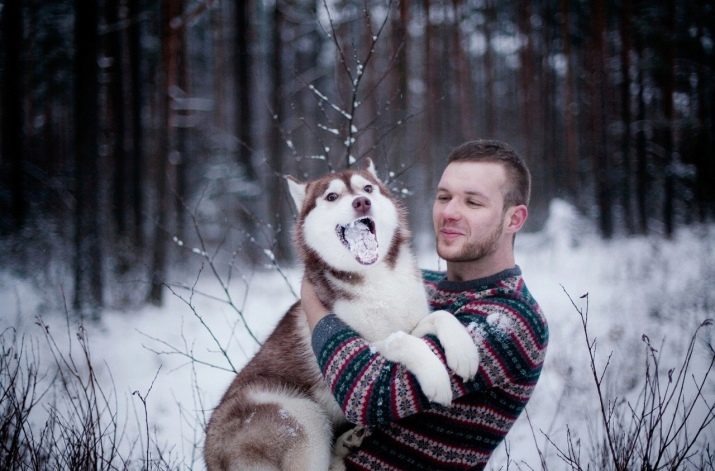
The main factor that must be taken into account when deciding to get a husky is their irrepressible energy and crazy activity. Of course, you can try to play the dog so that he gets tired physically. But such a trick can work with anyone, just not a husky. To tire this dog, you have to try hard. Only after that it will be possible to achieve the desired complaisance of the pet.
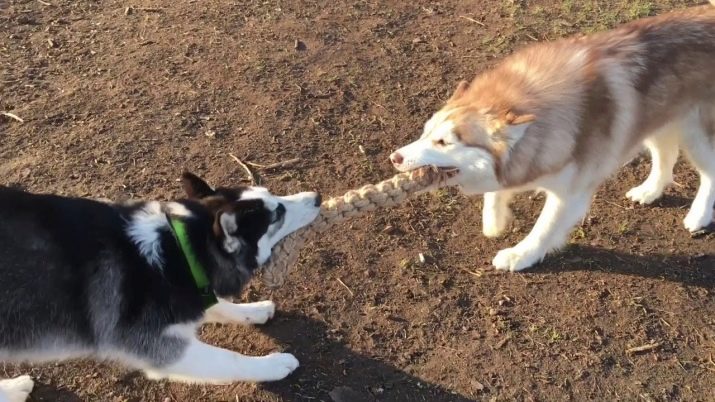
If you do not take up the upbringing of the husky in a timely manner and let everything take its course, then the dog will certainly be naughty a lot to get his fill. Due to such surges of energy, furniture and wallpaper in the apartment can be seriously damaged, as well as floor coverings. For this reason, husky training should not be postponed until better times - this should be done as soon as possible.
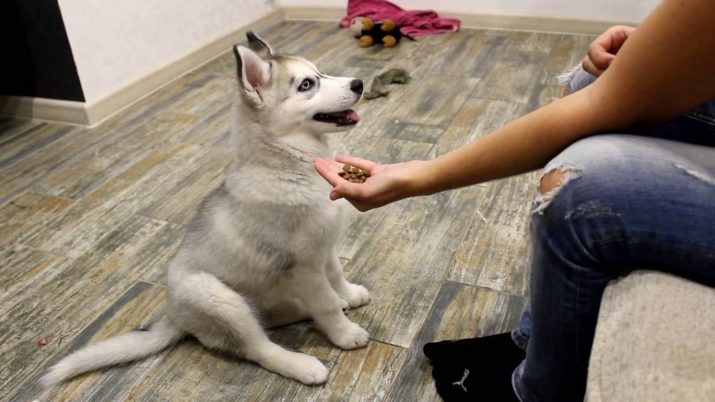
Huskies fit seamlessly into large families. They get along well with young children. Since the Eskimos for many years trusted these animals the most precious thing - their children, the dogs got used to them and loved them very much. But one cannot ignore the fact that each individual individual has its own character and behavior.
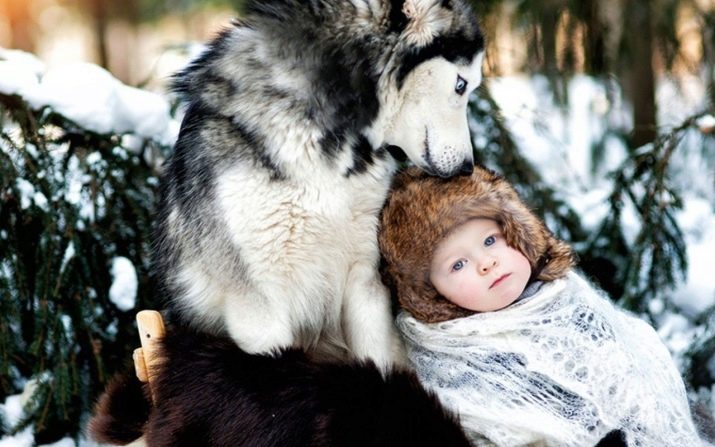
Keeping a husky at home, we must not forget that wolf blood flows in her veins... At any moment, she can make herself felt, and the animal will suddenly dash off in an unknown direction, trying to catch up with any object that seems interesting to her. Often such extraordinary and unpredictable behavior of the husky ends up with the owner losing him forever.

These dogs have minimal perseverance. Husky cannot sit quietly in one place for a long time. We must remember that the ancestors of these animals are sled dogs that traveled great distances. Before starting such a dog, you need to think several times about whether you can provide it with the proper conditions in which it can release its irrepressible energy.
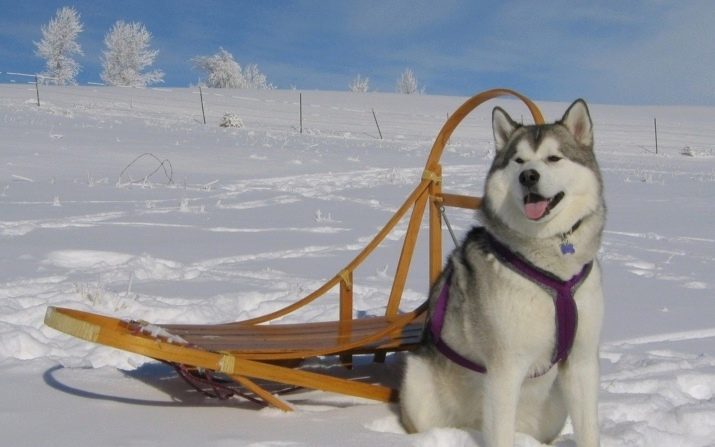
Advantages and disadvantages
You can't rush to buy a husky puppy. First you need to get acquainted with all the positive and negative qualities inherent in this famous breed.
First, let's take a look at the benefits of a husky.
- The main advantage of these dogs is their friendly disposition and sociability.
- Huskies are great for children. An exception can only be individuals with certain character traits.
- Huskies are hardy dogs. They feel great even when there is a bitter frost outside the window.
- These dogs have amazing appearance. Looking at them, the eye rejoices.
- The representatives of this northern breed have a well-developed intellect.
- They are loyal and loyal dogs that are strongly attached to their owner.
- These pets have excellent immunity. They do not get sick often, especially if they are kept in good conditions.
- With such a pet it will be especially interesting for active and energetic people who love sports, jogging and other similar things - it will be possible to do this in the company of a furry friend.
- Huskies rarely show aggression.
- In relation to other animals, representatives of this breed are also friendly. They love to communicate, rarely come into conflict.
- These dogs never impose their company.
- Usually, the husky does not emit strong and unpleasant odors. Dogs of this breed are very clean, which pleases many people who keep them at home.
- These animals do not need complicated and expensive care. Despite the many features and nuances of the content, huskies are unpretentious.
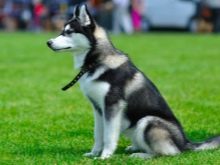

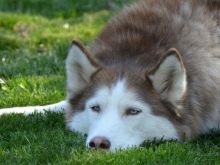
As you can see, these dogs have plenty of positive qualities. That is why they are so popular and are the dream of many people. But do not rush to buy a husky puppy until you familiarize yourself with its shortcomings.
- You cannot leave your husky alone for a long time. The dog can start to howl very loudly and heart-rendingly. Moreover, he will be able to do this for a long time. Often these dogs do not just howl, but insistently scream, frightening their neighbors (this howl does not always look like a dog's).
- There is always a lot of coat left from the husky, especially when the shedding period begins. When it ends, according to the owners of such dogs, they briefly lose their attractiveness and look shabby.
- Suddenly, the husky can jump off the spot and rush away, chasing the object / object of interest (it can be anything - a cat, a bird, or a package thrown on the street).
- Husky can easily make a tunnel or jump over a fence, if he needs it - there are no obstacles for these dogs.
- These dogs are great lovers of hunting cats, chickens and rabbits.
- If the husky is too bored, he will gradually destroy everything that lies badly. These dogs often gnaw on baseboards, table and chair legs and other similar things.
- Representatives of this sled breed do not tolerate heat very well. They are more comfortable when there is a cold and snowy winter outside the window.
- Husky is not the best guard. The dog will not protect either property or its own owner.
- It is very difficult to keep these dogs in an ordinary city apartment - they will need regular walking (they will have to spend a lot of time on it).
- Such dogs are strongly discouraged by very busy and lazy people who will not find extra time to practice with them. In addition, the owner of the husky should not be weak-willed and weak-willed - these animals will obey only a strong leader.
- Huskies are very capricious and always do as they see fit. Not every owner can overcome their character.
- Dogs of this breed are poorly trainable, because they do not like to be commanded. It is very difficult for them to concentrate. But even without training, you cannot leave them, otherwise a cute adorable puppy will grow into a large wayward dog that will gnaw, bite and break everything around.
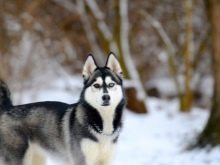

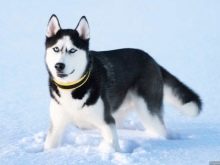
These dogs have many disadvantages. Their bad habits and character flaws must be taken into account if you are planning to have such a pet. Many people buy husky puppies for their beautiful eyes and luxurious fur, but over time they face many serious problems that inevitably arise if the owner does not know how to handle such an animal.
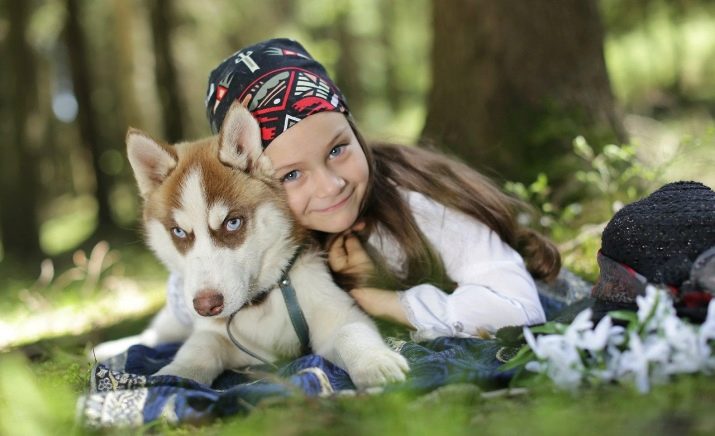
Views
There are certain varieties of this breed. Each of the husky subspecies has distinctive features related to both appearance and color, as well as behavior and habits. Let's take a closer look at what types of huskies are.

Siberian
This type of husky was bred in the United States. It was obtained by crossing sled dogs from Alaska and Siberia. The appearance of these dogs, which many people are accustomed to, is the result of the work of breeders who set themselves the goal of transforming a working heavy truck into a beautiful dog adapted to life in the city.
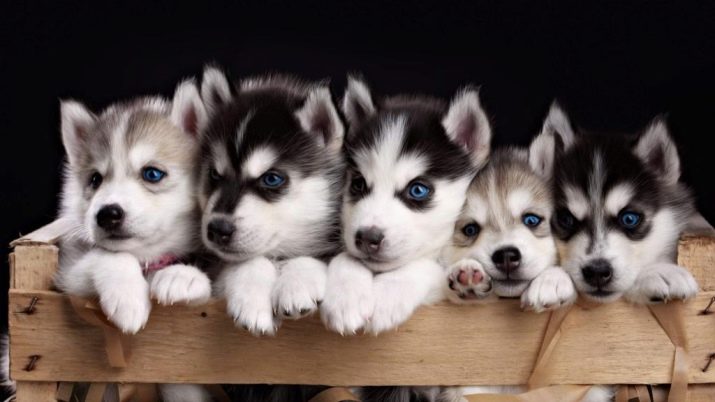
Modern Siberian huskies are for the most part excellent companions, but with one peculiarity - they are very energetic. They always need activity, running, games.
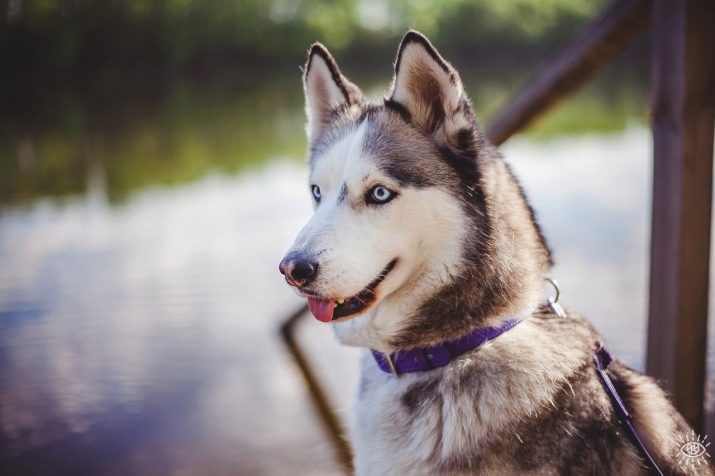
The appearance of the Siberian Husky is classic, as is the size. Their average height is 60 cm and their weight is 30 kg. These faithful friends of man are different cleanliness. They do not give off unpleasant odors like most other dogs. This cannot but rejoice many owners who keep these pets at home.
The Siberian Husky's coat is coarse and has a soft undercoat. During periods of molting, it must be thoroughly combed out daily.... The rest of the time, there is often no need to resort to such procedures - once a week is enough.
It should be borne in mind that these dogs are great lovers of physical activity. At the same time, they behave very friendly and welcoming, which conquers the hearts of people.
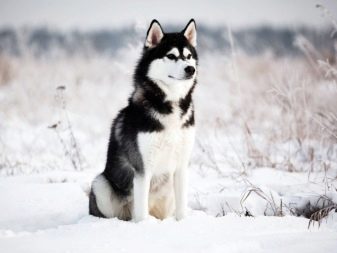
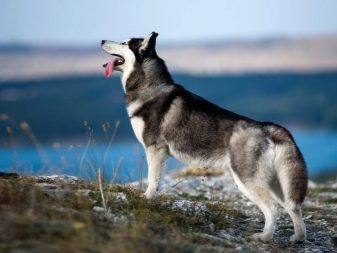
Siberian huskies are excellent hunters. That is why their coexistence with rodents on the same territory can end in disaster for the latter. In females, hunting instincts are usually much stronger than in males. But there is no reason to worry - a furry comrade will only hunt for fun.
Siberian Husky is not the best guard, because in these dogs there is no anger and unnecessary aggression. They will not throw themselves at strangers and may even approach a stranger.
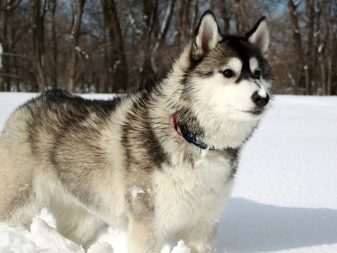
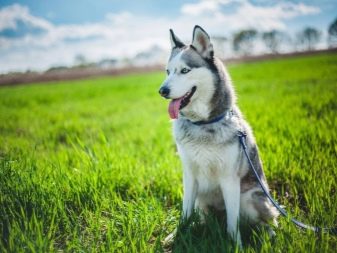
Sakhalin
Dogs of this variety are "workhorses" and belong to the draft type. Otherwise they are called "karafuto-ken". The closest relatives of these individuals are the Japanese Spitz and Akita Inu.
These animals have excellent musculature. They are powerful and fast, and their bones are very strong. Sakhalin Huskies are distinguished by a good mind. They have a calm and peaceful disposition. They usually behave absolutely calmly. Unfortunately, today the representatives of this breed are on the verge of extinction.
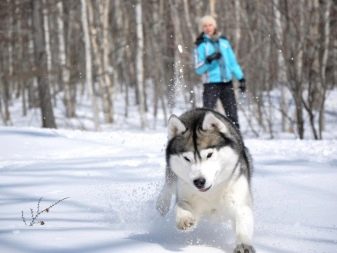

Yakutsk
Laikas are incorrectly called Yakut huskies. She was originally bred as a sled dog. These individuals have a strong constitution, well-developed muscles. As for the appearance, it really is in many ways similar to the appearance of the northern brothers. Only the eyes of the huskies are straight, wide-set. These individuals have a sturdier coat and a well-developed mane. Their color is most often spotty and more varied than that of other varieties.
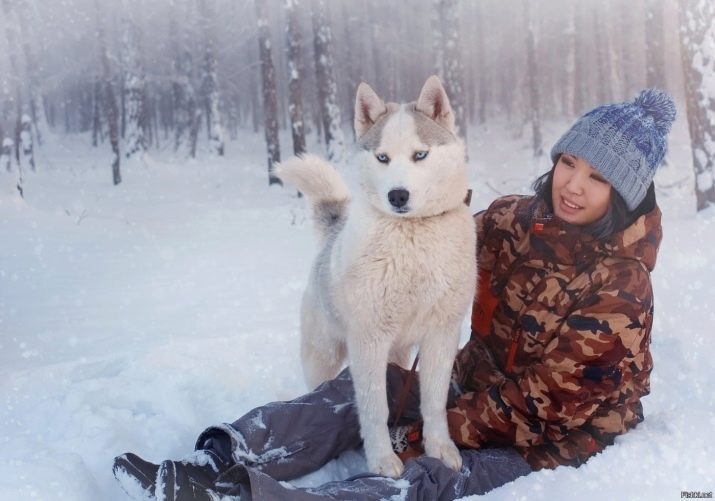
Japanese
Japanese huskies are called Akita Inu. These are long-haired animals with a characteristic large head of a triangular structure. The eyes of the Akita are small, and the ears are erect, like the tail, twisted into a ring. The average weight of these furry friends is 45 kg and their height is 70 cm.
Japanese huskies can have a variety of colors, but the most common individuals are brindle or red and white.

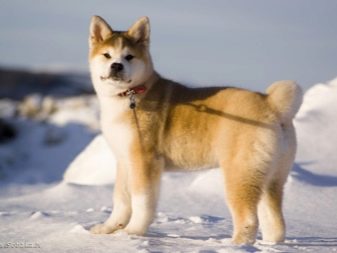
American
The American Husky is called the Eskimo Laika. These dogs are very closely related to the Siberian "comrades". True, one must take into account the fact that these animals are not at all adapted to life in an ordinary city apartment. It is much more comfortable for them to live in the private sector, where a large and spacious aviary can be made for the pet and where he will not feel cramped. American dogs also just love to run a lot, long and fast.
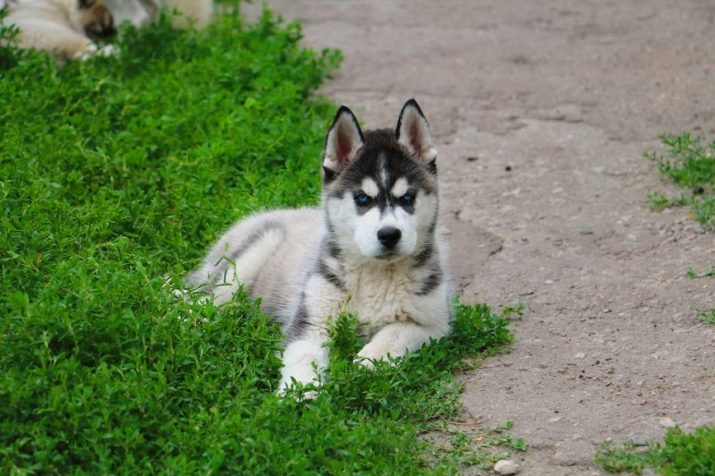
Alaskan
It has not yet been recognized as a separate subspecies. These dogs are distinguished by not too thick and short hair. There is a genetic mixed relationship with relatives, due to which the commission still cannot recognize Alaskan individuals. When breeding these animals, German Shepherds, Border Collies, as well as luxurious and lush Alaskan Malamutes were involved.
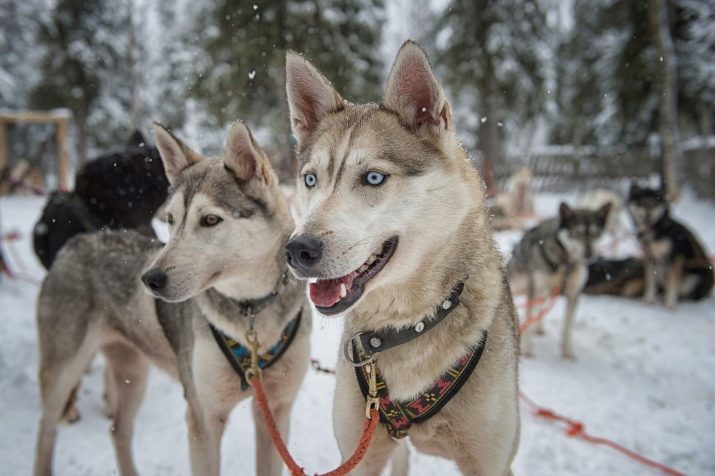
Baikal
On the territory of Russia, in the village of Listvyanka, there is a nursery in the conditions of which a separate subspecies of husky was bred (according to the breeders). The beautiful Baikal dogs saw the light there for the first time.
If you compare them with Kamchatka species, you will notice that their body structure is slightly different. In addition, Baikal dogs show themselves to be more resilient and faster. True, the conditions of frosty latitudes absolutely do not suit them - they are not adapted to such an environment. As in the above case, this breed has not yet been recognized by an international association.

Finnish
Huskies are also bred in Finland. Dogs belonging to the Finnish subspecies are the result of crossing the most common Siberian huskies and representatives of racing breeds. They feel great in extremely low temperatures and love to go in a sled. Sledding tours with these lovely dogs are extremely popular in Finland.

Kamchatka
There is a kennel in Kamchatka where they breed a separate subspecies of dogs. They are called Kamchatka and are bred for the purpose of participating in races organized every year on dog sleds. The participants of the race cover more than a thousand kilometers in conditions of low temperatures and frost. Kamchatka dogs are not afraid of such external factors, since they were bred precisely for the passage of the race in such conditions.
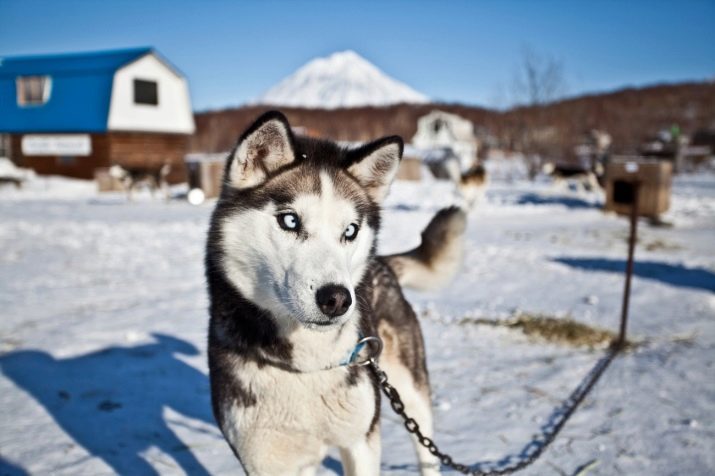
How to choose a dog?
If, despite all the nuances of the content and the disadvantages of representatives of this sled breed, you still want to buy a husky puppy, then you should know that you need to choose it carefully and deliberately. The first step is to consider the entire brood. Never buy a dog that the breeder is trying hard to sell to you, especially if you are looking for an inexpensive one. Noticing the limited funds, the seller will try to sell weaker or even sick individuals.

Observe the puppies as they frolic in the enclosure. At this time it is necessary to pay attention to some features of the behavior of animals.
- If you notice that the puppy is acting too timidly, then this will not be a good sign. If several babies behave in this way at once, then this should not calm you down. Most likely, these are puppies from the same litter. This means that after a while the animal will behave too timidly and insecure, which is completely inconsistent with the behavior of purebred proud huskies.
- Healthy boys and girls of good quality must be friendly and trustworthy, even with strangers. They should greet the guest with funny jumps, attempts to lick a person, or grab his clothes or laces. Often, such behavior of little huskies scares people and arouses suspicion: what if the baby will continue to be hyperactive and begin to obey a little? In the case of huskies, such a description is normal - they behave very actively, and they do not always like to obey the owner.
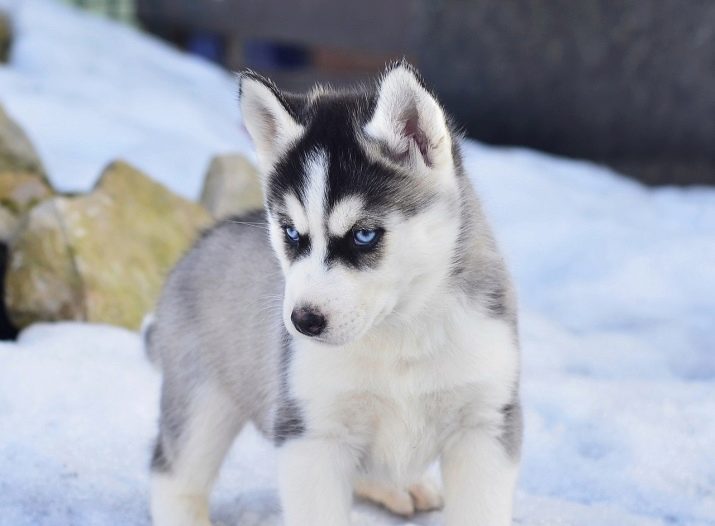
Of course, negative factors that can be frightening at first can be minimized in time. It is enough to show the kid who is the boss in the house. Demonstrate to your puppy that you are the leader, not him.
Puppies may seem to be being overly selfish and overconfident. Yes, such factors exist and will have to be dealt with as the pet grows up. If you understand that you cannot cope with such character traits of an animal, then it is better to immediately abandon the purchase, so that in the future you do not have to get rid of an already grown-up and ill-bred dog, causing him serious psychological trauma.
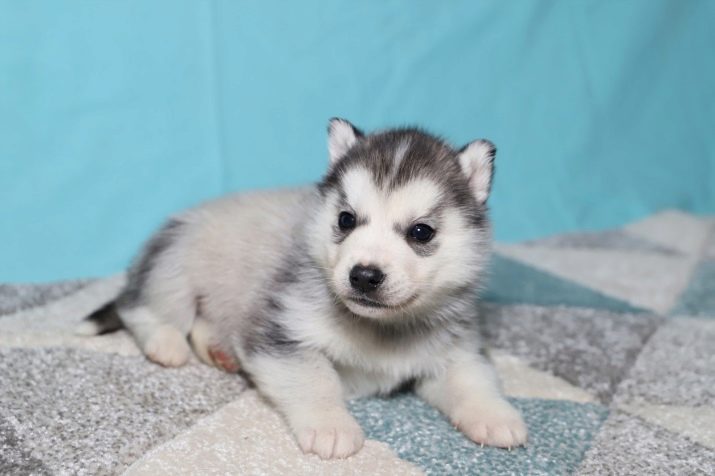
Buying purebred huskies is necessary in elite kennels with a good reputation or with conscientious breederswho can provide all the required documents. It is advisable, immediately after the purchase, to consult with the seller or the specialists of the shelter about feeding and caring for the baby when you bring him to your home.
Keep in mind that purebred huskies will not be too cheap. If puppies are sold for ridiculous money, then this should give you serious suspicion.
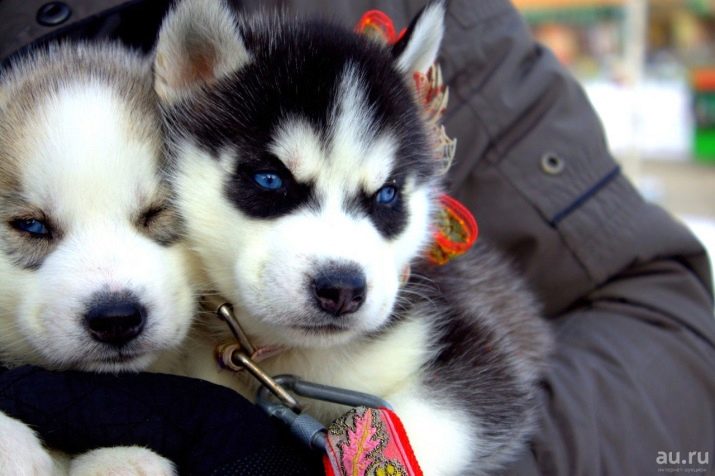
How to care?
It was already mentioned above that representatives of this northern breed are undemanding in matters of care. However, this does not mean that they will not have to be looked after at all. Still, certain actions will be required from the owner in order for the animal to remain clean and healthy. Let's take a look at how to care for a husky.
- The coat of these dogs requires grooming. It needs to be combed out throughout the entire molting period. Wash your dog as needed. Brush occasionally to keep it from getting tangled or tangled, especially if you are keeping a long-haired individual.
- Monitor your dog's teeth. It is necessary to clean them every day with a special paste. It is advisable to buy special bones and toys for the husky that are sold in pet stores. With the help of these things, animals will brush their teeth.
- Remember to trim your dog's nails. It is advisable to do this at least once a month. Clipped claws will make the husky safer for both household members and himself.
- It is very important to provide eye care for dogs of all ages. From time to time, wipe your eyes with a damp swab to remove any discharge that appears. This should be done as needed. Always examine the eyes of the dog in order to notice the onset of inflammatory processes in time, with which you need to begin to fight in a timely manner. If you notice redness, green or yellow discharge from your eyes, it's best to see your veterinarian.
- You also need to clean the dog's ears. This should be done as needed. Examine them for injury and damage, as well as infection and contamination.
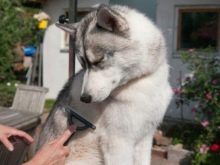
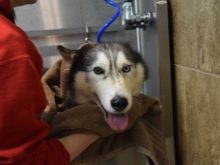
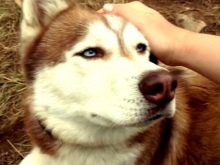
Veterinarians strongly advise against bathing your husky too often. In most cases, owners wash these dogs only on special occasions. This can happen no more than once a year. Regular haircuts are unnecessary for these dogs.

Nutrition
Puppies and adults of the husky breed must eat well. Only if this rule is observed can we talk about the health and longevity of the pet.
Initially, you need to choose food for the dog - dry or wet. Many owners choose dry food, since they do not need to be pre-cooked - just pour the food into a bowl and that's it. However, both pellets and wet foods (pates, gravy chunks) must be of high quality classes.
It is advisable to buy the kind of industrial food that your veterinarian recommends. In this case, you will definitely not be mistaken in choosing food for your pet.
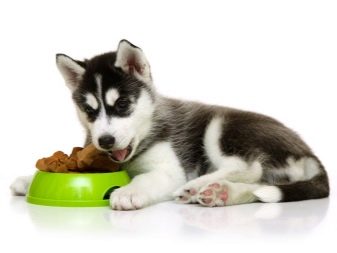
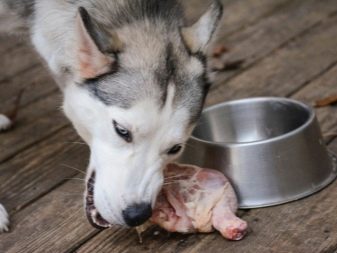
If you do not want to give your pet ready-made food, then you can feed the dog with natural products instead. You should consider what the representatives of this breed can eat:
- chicken and turkey meat;
- offal;
- cartilage;
- beef meat;
- oatmeal;
- buckwheat;
- rice;
- sea fish;
- low-fat fresh kefir;
- egg yolks;
- cabbage;
- zucchini;
- carrot;
- pumpkin.



Husky dogs should not be fed with the following foods:
- pork;
- mutton;
- sweets;
- flour products;
- smoked meats;
- Salo;
- any pickles and marinades;
- fried foods;
- spicy dishes;
- milk;
- chicken protein;
- bones;
- nuts;
- potatoes;
- grapes and raisins.
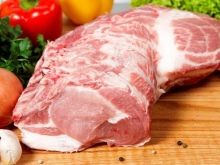
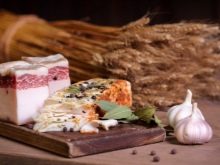

You should always remember that the husky spends an incredible amount of energy during the day. For this reason, dogs of this breed always need to replenish it by consuming a sufficient amount of food rich in protein. It is very important to give your pet an exceptionally balanced diet. It should contain vitamins A, E, C, D, B, K and many others. In addition, food must contain elements such as:
- zinc;
- iodine;
- iron;
- copper;
- calcium.

Education and training
Many people are interested in how to cope with a husky, how to wean them from biting, unexpectedly running away and committing other wrong actions. Before you start training these pets, you must take into account that they will absolutely not do anything just like that. They will always need good motivation, otherwise everything will be unsuccessful. During training, the owner must necessarily demonstrate to the dog that he is a leader, but at the same time respects him.
Training should be varied so that the active dog does not suddenly get bored.
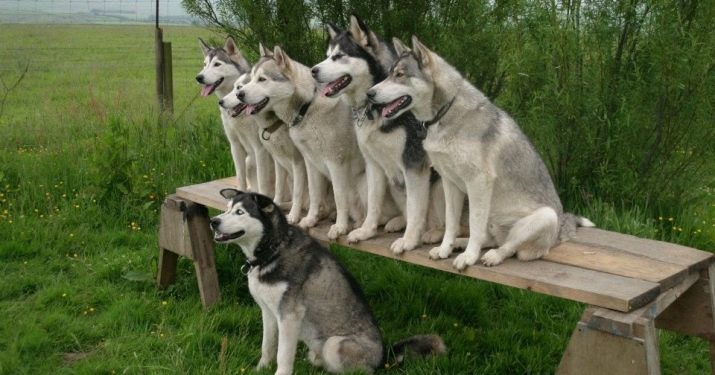
In six months, the dog can undergo a training course. As for the basic basic commands, you can start learning them earlier.The endless and monotonous repetition of the same commands will quickly get tired of the dog. For this reason, experts advise to consolidate the knowledge gained by the dog in practice during walks or games. Husky can especially bribe treats received for a correctly completed task.

Huskies very quickly and easily get used to the toilet on the street. Until the age of 6-8 months, a puppy can walk on a newspaper or a diaper at home, without leaving his native walls. At this age, it is very difficult for babies to endure, therefore, scolding them for a dirty floor is not recommended - this will only alienate an already proud and wayward dog.
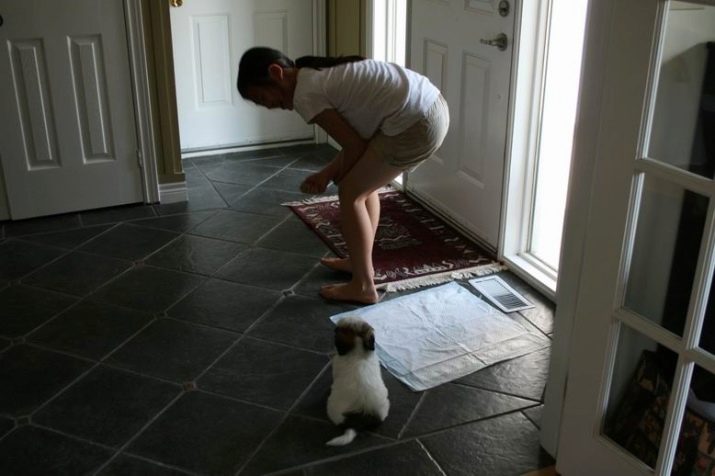
When a thoroughbred baby is vaccinated, it can be safely taken out into the street. So that the dog understands more quickly what you want from him, you can take a newspaper with you on the road. When the kid does everything right, do not forget to praise him and give him a treat.
But praising the puppy too loudly and emotionally is not necessary - it can scare him and he will take the praise as censure.

The hardest thing for a husky is to master the command “near”. Despite this, it cannot be neglected. If the dog does not learn the command, then during walks he will drag the owner behind him, not reacting in any way to all his protests and indignations. I must say that the husky almost always has to carry something. Pulling on the leash is their standard genetic habit. The owner can take these behaviors under his personal control. It will take a lot of time, effort and patience. It will be useful to additionally learn commands such as "Left!", "Right!", "Stop!", "Shake yourself off!", "Back!"
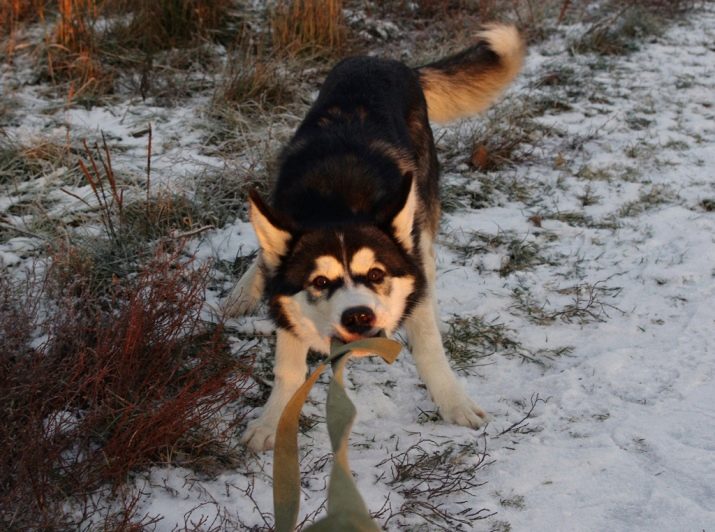
Husky training is difficult. In this case, many owners enlist the help of experienced trainers and professional dog handlers.
The main thing is not to give up right away if the dog has demonstrated its unwillingness to learn something new.
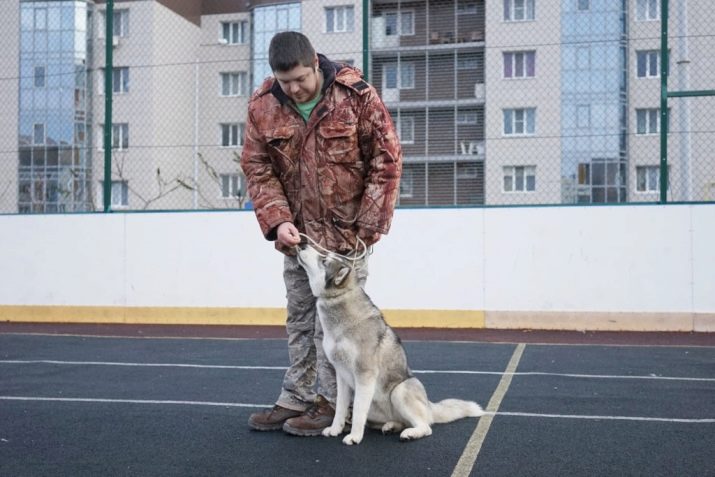
Reviews
The Husky is a truly controversial, unusual and flamboyant dog, unlike any other breed in existence. These northern riders can fall in love with themselves at first sight, and after a couple of minutes unbalance a person with excessively arrogant behavior.
With this pet you need to find a common language, establish the right contact, show who is the boss in the house. People who decided on such educational measures and brought in huskies leave different reviews about these dogs.
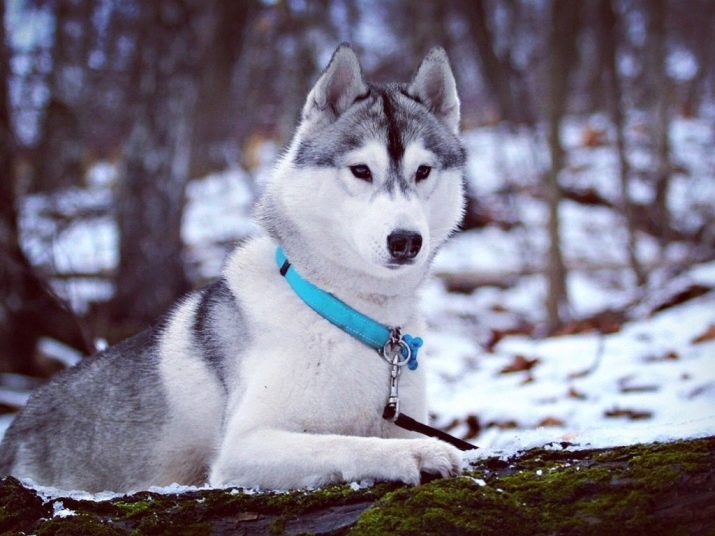
Of the good, the owners of these animals noted:
- friendly disposition, sociability, they easily make contact with people and other animals;
- people who are fond of different sports literally fell in love with these dogs, because with such pets you can practice in pairs, and this is much more interesting;
- the playful disposition of the husky pleases many owners, cheers up;
- according to most breeders, they cannot stop looking at the beauty of these animals;
- beautiful mind;
- endurance;
- love children and do not harm them;
- do not exude harsh "doggy" odors.

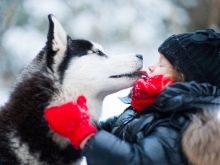
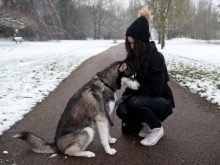
Some people call the husky a real "miracle of nature" and "the best friend." However, the owners leave not the best reviews about these dogs. Of the minuses, people emphasize:
- a large amount of falling hair;
- just crazy energy and activity, which is very difficult to cope with;
- hard to train the dog;
- Huskies find it difficult to get along in apartments, because they do not have enough space there and they have to spend almost the whole day walking with them, and not everyone has time for this;
- from some owners the dog steals food from the table and eats slop on the street;
- the dog often does not obey.
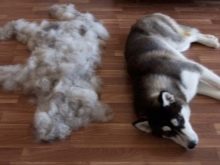

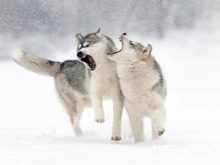
Husky is not a dog for everyone. Before starting such a fluffy companion, it is important to weigh the pros and cons several times, because it will be very difficult to keep him (especially in an apartment).
But if you do everything right and are able to raise this animal, then it will turn out to be a faithful friend and companion whom you will love with all your heart.
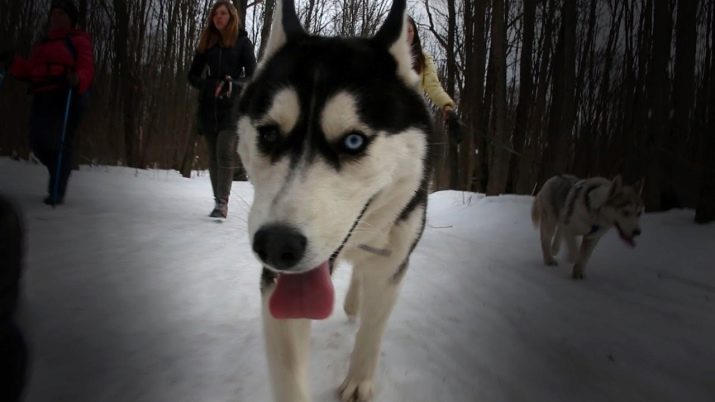
See the video below for the most interesting information about the breed.






































